Women’s Rights Activist and Author Lydia Maria Child was a women’s rights activist, abolitionist, Indian rights activist, author and journalist. Her journals, fiction and domestic manuals reached wide audiences from the 1820s through the 1850s. Her writings were inspired by a strong sense of justice and love of freedom. Born in Medford, Massachusetts, in 1802, Lydia Maria Francis was the youngest of six children. Her father was a baker famous for his Medford Crackers. She liked to be called Maria. Though the home atmosphere reflected her father’s strict Calvinist beliefs, she was greatly influenced by her very intelligent older brother, Convers. In 1814, after the death of her mother and the marriage of her favorite sister Mary, her father decided…
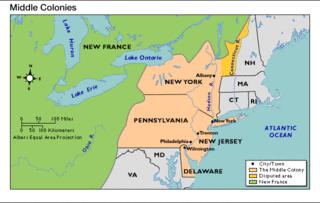
Overview of the Middle Colonies
The Middle Colonies — New York, New Jersey, Delaware and Pennsylvania — created a unique environment of early settlement by non-English Europeans, mostly Dutch and German. English men and women were the smallest minority. These immigrants came mostly in family units that preserved a balanced sex ratio. Religious Tolerance The Middle Colonies were the most ethnically and religiously diverse of the thirteen original colonies because of the influence of their Polish, English, Dutch, French and German origins. In this atmosphere of religious tolerance, New Netherland and New Amsterdam became the commercial center of the eastern North American colonies.
American Colonies: New Sweden
The Year: 1638 New Sweden was a small Swedish settlement along the Delaware River on the Mid-Atlantic coast of North America. It was centered at Fort Christina, now in Wilmington, Delaware, and included parts of Delaware, New Jersey, and Pennsylvania. The settlement was founded March 29, 1638, and was incorporated into Dutch New Netherland on September 15, 1655. Along with Swedes, a large number of the settlers were Dutch. By the middle of the 17th century, Sweden was one of the great powers in Europe. Sweden then included Finland and Estonia and parts of modern Russia, Poland, Germany and Latvia. Inspired by the other European powers, the Swedes wanted to expand their territory into the New World. America was seen…
Nancy Hart Douglas
Confederate Spy and Guerrilla Fighter Nancy Hart, a Confederate spy and soldier, was born in 1846, in Raleigh, North Carolina. When she was an infant, her family moved to Tazewell, Virginia. Her mother was first cousin to Andrew Johnson, who became president after the assassination of President Abraham Lincoln. Image: Nancy Hart Douglas in 1862 In 1853, Nancy and her family moved in with her sister and brother-in-law, Mary and William Clay Price. In the next six years, Nancy lived in the wilderness of Roane County, Virginia—now West Virginia. She became an excellent shot with a rifle and an expert rider. After the Civil War began, western Virginia became a dangerous place. The citizenry held divided loyalties—some pro-Confederate and many…
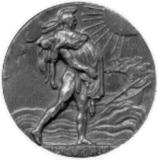
Penelope Van Princis Stout
The Year: 1640 Image: Penelope Stout Commemorative Coin Shows her being carried away by Indians Woes in the New World Penelope Van Princis Stout was born in 1622 in Amsterdam, the Netherlands. She married John Kent in 1640, and the couple sailed for New Amsterdam (now New York City) on Manhattan Island in the American colony of New Netherland. For unknown reasons, their ship ran aground at the coast of what is now Monmouth County, New Jersey. The ship’s other passengers decided to continue toward their destination on foot, but Penelope remained with her sick husband who was too weak to walk. Penelope and her husband had not been in the woods very long when they were attacked by Native…
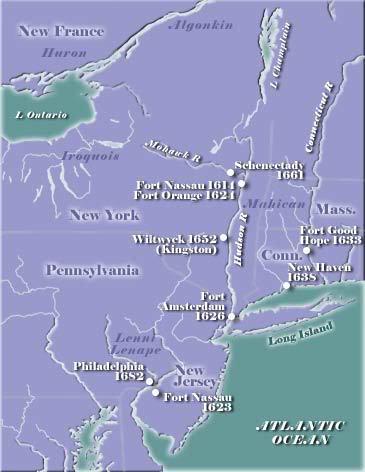
Lady Deborah Moody
The Year: 1639 Lady Deborah Moody was christened Deborah Dunch in London in 1586. She came from a wealthy family with both political and religious connections, but also one that believed strongly in civil liberties and religious non-conformity. Deborah married Henry Moody, a well-connected landholder. He was later given knighthood, and she became Lady Deborah. In 1629, Henry passed away, when she was approximately 33. Image: Map showing Long Island and New Amsterdam, later renamed New York At this time, England was in great religious turmoil, and Lady Deborah was very attracted to Anabaptism, a Protestant sect that believed that baptism should be received by adult believers, but not children.
Mary Livermore
Civil War Nurse and Feminist During the Civil War, Mary Livermore organized a volunteer support network for the Union hospitals, wrote letters for wounded soldiers, escorted wounded soldiers from hospitals to their homes, and raised large sums of money to support the work of the U.S. Sanitary Commission. Livermore worked closely with Mary Ann Bickerdyke who was chief of nursing under the command of General Ulysses S. Grant and General William T. Sherman during the Atlanta Campaign. Mary Ashton Rice was born in Boston on December 19, 1820, into a strict Calvinist Baptist family, took religious questions seriously as a child. She liked to pretend to be a preacher, using the kitchen table as her pulpit, and if she could…
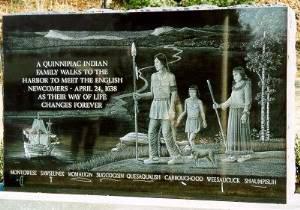
New Haven
Colony of New Haven Image: Quinnipiac Memorial Monument Fort Wooster Park, New Haven, Connecticut Monument to Native Americans This monument to local Indians, whose ancient place names like Hammonasset and Wepawaug still identify the landscape, was dedicated on November 12, 2000. It stands above New Haven Harbor, looking down upon rich fishing and oystering grounds, and memorilizes the small tribe who educated the colonists in wilderness skills and helped protect them against raiding parties from larger tribes such as the Pequots.
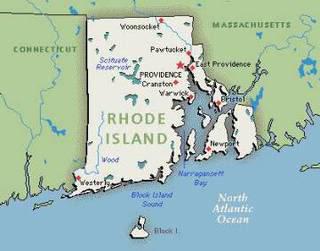
Rhode Island Colony
The Year: 1636 The Colony of Rhode Island Scattered Europeans began to settle the area that would become Rhode Island as early as 1620, but the first permanent settlement was not established until 1636. When Roger Williams was banished from the Massachusetts Bay Colony for his religious beliefs, he took refuge among the Narragansett Native American tribe, who occupied the country at the head of Narragansett Bay. Canonicus, their chief, held the good man in high esteem, and presented him with a large tract of land, which the devout Williams named Providence. A New England Colony Other nonconformists followed Roger Williams to that region, including Anne Hutchinson and William Coddington, who founded Portsmouth in 1638. A short-lived dispute sent Coddington…
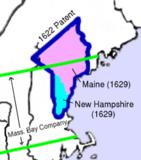
Maine Colony
History of Maine Image: Map of Early Maine The 1622 grant of the Province of Maine is outlined in blue. The Province of New Hampshire is shown in teal, and the colony of Maine is shown in pink. The boundaries of the Massachusetts Bay Company grant are shown in green. The Province of Maine refers to several English colonies of that name that existed in the 17th century along the northeast coast of North America, roughly encompassing portions of the present-day states of Maine, New Hampshire, Vermont, and the Canadian province of Quebec. The province existed through a series of land patents in several incarnations, the last of which was eventually absorbed into the Province of Massachusetts Bay.